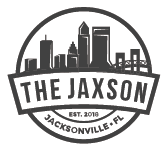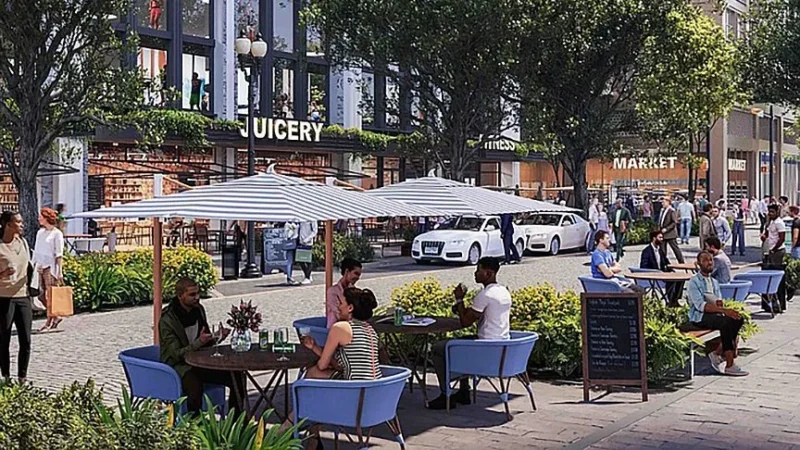
The recently completed Union Terminal Warehouse project stands as a compelling example of industrial adaptive reuse—a growing trend in urban revitalization. Industrial adaptive reuse involves repurposing old industrial buildings such as factories, warehouses, power plants, and mills for new functions that differ from their original use, all while preserving the structures’ historic character and architectural integrity.


Although long associated with older industrial cities across the country, this approach is gaining traction locally as developers increasingly recognize the potential of early 20th century industrial properties throughout Jacksonville’s urban core neighborhoods. While the Union Terminal Warehouse is considered the city’s largest historic industrial property, it is far from the only site offering a distinctive adaptive reuse opportunity.
Below are five additional early 20th century buildings that combine architecturally unique features with deep connections to Jacksonville’s history.
Anchor Glass Container Corp., 2121 Huron St.

While The Glass Factory event venue in the Rail Yard District is widely known today, the true heart of Jacksonville’s glass-making heritage lies on the Westside, home to a historic industrial landmark—the Anchor Glass Container Co. Spanning over 624,000 square feet, this massive facility was Florida’s only glass bottle manufacturing plant and one of the Jacksonville Electric Authority’s largest customers, at one point incurring energy costs of up to $900,000 per month.
Glass production on the site began in 1922, when a group of Pittsburgh investors led by Harry A. Neff established the Tidewater Glass Co. to manufacture milk and soft drink bottles. Though Tidewater quickly shuttered, the facility was acquired in 1926 by Antonio Scalise, who launched the Florida Glass Manufacturing Co. Scalise later rebranded the business as Tropical Glass and Box Co. in 1949. Among its early clients were prominent names such as Pepsi-Cola of Florida, Dixie Lily Co., Maxwell House Coffee, and Frostie Root Beer. Embracing a concept akin to modern industrial tourism, the factory offered public tours daily from 10:30 a.m. to 4:30 p.m.
By the mid-1950s, the operation became a subsidiary of Anchor Hocking Glass Corp. In 1983, Anchor Glass Container emerged as a separate entity, carved out by Wesray Capital Corp.—a firm co-founded by William Simon, former U.S. Treasury Secretary under Presidents Nixon and Ford.
In the early 2000s, the plant employed between 235 and 400 workers and was a key supplier for the local Anheuser-Busch brewery, churning out 2.7 million beer bottles daily. After more than a century of glass-making, the factory ceased operations in February 2025, marking the end of an era and resulting in the layoff of 144 employees.

Carolina Lumber Co., 575 Phelps St.

Established in 1902 as the Carolina Portland Cement Co., the business was one of several building materials suppliers strategically located along the railroad lines forming the boundary between the Springfield and Eastside neighborhoods. Over time, it became a key player in Jacksonville’s industrial landscape.
The centerpiece of the property is a 20,056-square-foot brick warehouse, distinguished by an elaborately crafted wood truss system. Completed in 1927, this structure replaced the company’s original building, which was destroyed by fire in 1926. Reflecting its growing emphasis on lumber, the company rebranded as the Carolina Lumber Co. in 1946.
At its peak, the business operated across 12 acres and served a five-county region, becoming a vital part of the city’s construction economy. When it ceased operations in 2018, it held the distinction of being Jacksonville’s oldest continuously operating lumber yard.
Recognized for its architectural significance as an example of industrial vernacular design, the Carolina Lumber Co. warehouse was designated a contributing structure to the Eastside National Register Historic District in 2023. Today, the site represents one of the largest redevelopment opportunities in the area. The 4-acre lumberyard was acquired by Ecoliving Realty Inc. in February 2022 for $500,000.
Jax Brewing Co., 1429 W. 16th St.

William Ostner broke ground on the Jacksonville Brewing Co. in 1913 with support from his wife’s family—the Schorrs of the Schorr-Kolkschneider Brewing Co. in St. Louis. With their backing, Ostner established a 30,000-barrel-a-year brewery, which released its first brew on May 16, 1914. By 1918, just before Prohibition arrived in Jacksonville, the brewery had grown to employ 243 workers and had cleared all of its debts.
During Prohibition, the company rebranded as the Jax Ice and Cold Storage Co. and adapted by producing Velvet Brand ice cream, Florida Export and Old Fashioned Dark “near beer,” along with bottled root beer and ginger ale. Demonstrating foresight, Ostner expanded brewing capacity four months before the 21st Amendment’s ratification in 1933, allowing him to swiftly resume full beer production after Prohibition’s repeal.
In 1935, the Jacksonville Brewing Co. found itself in a trademark dispute with Jackson Brewing Co. of New Orleans, as both marketed “Jax Beer.” A compromise allowed Jacksonville Brewing to sell in Florida, Georgia, and the Carolinas, while Jackson Brewing claimed markets to the west. By 1940, the Jacksonville company formally adopted the name Jax Brewing Co., and by 1943, production had surged to over 100,000 barrels annually.
Throughout the 1950s, Jax Beer—with its recognizable cockatoo mascot—became a dominant brand in Florida, Georgia and South Carolina. The brewery also produced a range of other labels, including Ostner’s Lager Beer, Sparkling Ale, and Stout; Hi Jax Beer; Jax Export Beer; Mecca Pale Beer; Jax Ale; Jax Bock; Royal Palm Beer; Fine’s Sparkling Ale; Peninsula Ale; and Rhein King Beer.
However, rising competition from national brewers and the financial burden of transitioning to aluminum cans strained the company. At the same time, its cold storage operations began generating increased revenue. In 1956, Ostner’s son sold the Jax Beer trademark to Jackson Brewing Co. and refocused the business entirely on cold storage, once again under the Jax Ice and Cold Storage Co. name.
In 1986, the company was sold to Industrial Cold Storage, now known as ICS Logistics. Though operations have ceased, the original 130,000-square-foot brewery still stands today—one of the few early regional brewery structures remaining in Florida.

Cadillac Motors Co., 924 Lane Ave. N.

The site at 924 Lane Ave. N. has a unique history that dates back to World War II. Originally developed by the U.S. Navy in early 1942, it served as Hart Field, an auxiliary airfield established to support military flight training operations in the Jacksonville area. After just nine months of military use, the Navy departed, and Hart Field was repurposed as a civilian airport, remaining in operation until 1952.
In 1961, a new chapter began with the construction of a 61,715-square-foot warehouse on the site. Designed with a distinctive mid-century modern roof, the building was engineered to allow natural light to filter into the interior. Early tenants included prominent companies such as the Cadillac Motor Car Co., The Kelly Springfield Tire Co., The Maytag Co., and the Sou Lus Truss Corp.
In more recent years, the building has continued to attract a diverse mix of industrial tenants, including Hot Box Enclosures and GBM. In May 2022, the property was acquired by a New Orleans-based owner and underwent rehabilitation for continued industrial use. Today, it houses businesses such as Jacksonville Precision Manufacturing, Taylor Crew Services, and Woodgrain, reflecting the building’s enduring adaptability and value in Jacksonville’s architectural landscape.

Technical High School No. 67, 129 King St.

Opened in 1942, Technical High School was established to provide specialized training in manual and technical trades, including woodworking, aircraft maintenance and automobile repair. Designed by noted architect Max Worthley, the 20-acre campus features a distinctive two-story classroom building overlooking McCoys Creek, along with two expansive warehouses characterized by sawtooth roofs and clerestory windows that allow natural light to fill the interiors.
During World War II, the school played a crucial role in supporting the war effort by training students in U.S. Navy aircraft repair. Following the war, it continued to serve as a vital vocational education center for Duval County high school students from 1947 until its closure in 1978.

Today, the site remains under the ownership of the Duval County School Board and occupies a prime location along the emerging McCoys Creek Greenway. With its rich history, architectural significance and strategic positioning, the former Technical High School presents a compelling opportunity for adaptive reuse and revitalization.







